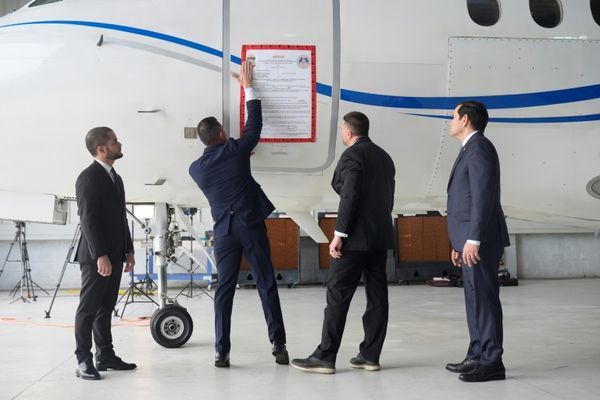
As businesses come to terms with a world market that is expected to be dominated by volatility, uncertainty, complexity and ambiguity due to geopolitical, economic and environmental risks, they are increasingly looking for reliable, proactive and dynamic logistics systems that can better facilitate the flow of goods and limit the risk of major disruptions. The trend of global investors reconfiguring their supply chains to minimise risks during the COVID-19 pandemic has also underscored how important it is for countries to upgrade their connectivity to the world market and improve the efficiency of their logistics.
In addition to its strategic location at the centre of the other five Greater Mekong Subregion (GMS)1 markets of China (specifically Yunnan Province and Guangxi Zhuang Autonomous Region), Cambodia, Laos, Myanmar and Vietnam, Thailand is also a member of the Indonesia-Malaysia-Thailand Growth Triangle (IMT-GT) and the Bangladesh-India-Myanmar- Sri Lanka-Thailand Economic Cooperation.
For several decades, this geographical advantage, together with Thailand’s continued development of its intermodal transportation linking the country to the Asia-Pacific region, has prompted multinational companies across diverse industries to choose Thailand as the operations base for their regional activities. Over the last decade alone, Thailand is estimated to have invested approximately US$ 130 million in infrastructure development2.
As the future development of logistic services in Thailand is oriented towards upgrading the physical infrastructure through the use of robotics and automation, drones and 3D Printing, and developing the digital side with a focus on data analytics, blockchain technology, IoT, cloud computing and Artificial Intelligence, the robust ecosystem that Thailand is establishing for these technologies will drive the country’s logistics industry.
The National Economic and Social Development Committee, a secretariat of the Thai government’s National Logistics Committee, reported that although the country’s logistics decreased slightly from 13.8% of its gross domestic product in 2016 to 13.2% in 2019, the sector rose to 14.1% of GDP in 2020, reflecting the impact of the pandemic on the tourism and other services sectors. By comparison, logistics accounted for an average of 6-8% of GDP in OCED countries and 12.8% of GDP across the Asia-Pacific region3.
In the latest edition of the World Bank’s Logistic Performance Index 20184, which assesses logistics performance in six dimensions, Thailand was ranked 32nd out of 167 countries, second only to Singapore in ASEAN. Of all six dimensions assessed, Thailand performed best in ease of arranging competitively priced shipments and in timeliness of shipments, if Japan, which was the top scorer in Asia, was used as a benchmark. The four remaining indicators include competence and quality of services; tracking and tracing; efficiency of clearance process; and quality of trade and transport-related infrastructure including ports, railroads, roads and information technology.
The NESDC, in collaboration with the private sector, has announced “The Third Thailand Logistic Development Plan 2017-2022”5 which outlines the following three guidelines for upgrading the country’s logistics:
• Supply chain enhancement involves upgrading the standard of supply chain management, connecting trade towards e-commerce, and enhancing the capability and competitiveness of logistics providers.
• Development of Infrastructure and facilities, which covers developing transportation infrastructure and the logistics network, developing a National Single Window System, enhancing electronic logistics procedures, and tackling international trade barriers.
• Development of logistics and supporting factors, which covers developing occupational standards for the logistics services, building the capacity of logistics service providers, improving R&D in logistics innovations and technology, and evaluating and monitoring international agreements and databases to assess the local logistics development.
Ramping Up Regional Connectivity
To hone its advantage as ASEAN’s trade and commerce hub in the near future, Thailand is pushing forward development of infrastructure networks with a focus on upgrading connectivity with the Asia-Pacific region.
One flagship project is the Eastern Economic Corridor (EEC), a special economic zone in the Eastern region with a focus on high-technology industries which will serve as engines for the country’s economic development. As the EEC area covers Map Ta Phut and Lam Chabang deep seaports and U-Tapao International Airport, it is where the Thai government has concentrated a majority of its investment on upgrading the transportation network.
Through public-private partnerships, the Thai government has made significant progress, with four out of five key projects having already been signed, as of August6. These include the development of Map Ta Phut Industrial Port (Phase 3); Laem Chabang Port (Phase 3); and the High-Speed Rail Linking Don Mueang, Suvarnabhumi and U-Tapao International Airports, as well as the U-Tapao International Airport and Eastern Aviation City Project. Generating an investment of approximately US$ 20 billion, all four projects are targeting a commencement of operations between 2025-2026.
Outside the EEC, the Southern Land Bridge, which will include a new upgraded commercial port, will provide a land link between the Pacific and Indian Oceans in addition to ports in the Strait of Malacca. Thailand’s Ministry of Transport began a feasibility study on the Southern Land Bridge project’s environmental and health impacts as well as a design and business development model in March of this year, with completion scheduled in 2022. The project is expected to include the development of smart commercial sea ports in Ranong and Chumphon provinces, offering a segregated route between the Gulf of Thailand and the Andaman Sea to serve the expected increase in the volume of shipping traffic in the future.
The Ministry of Transport has also commenced the Motorway-Rail Map (MR Map) project, which will see the construction of major roads and rail lines connecting the country’s regional industrial and special economic zones. The Ministry is conducting feasibility studies on four routes for roads and parallel dual-tracked railways including Ranong-Chumphon, Nong Khai-Lam Chabang, Kanchanaburi-Ubon Ratchathani, and a new Outer Bangkok Ring Road.
The Thai government’s infrastructure connectivity plan also includes the construction of four dry ports to link Lam Chabang Deep Seaport to Kon Kaen and Nakhon Ratchasima in the Northeastern Region and to Nakhon Sawan and Chacheongsao in the Central Region.
The construction of the MR Map routes and dry ports will enable Thailand to take advantage of a better flow of goods and services along three main GMS Economic Corridors7. The East- West Economic Corridor, North- South Economic Corridor, and Southern Economic Corridor enhance trading routes across the GMS markets. Among the most advanced projects is the China-Laos Railway which is a high-speed train route linking Kunming in China to Vientiane in Laos. The transportation route, which will considerably shorten travel time between China and Laos, offers an exciting opportunity for Thailand to enhance its border trade and transportation and further boost the tourism and wellness industries in Thailand.
In 2015, Thailand began the development of 10 special economic zones along its borders8 to serve as economic gateways to neighbouring countries across the country’s Northern, Northeastern, Western, Eastern and Southern borders. To support these projects, the Thai government has offered incentives for investment and workforce development in targeted industries and worked on developing the business environment in these areas.
BOI Cementing Thailand’s Position as a Trading and Logistics Hub
The BOI offers investment promotion incentives for a comprehensive range of logistics business services aimed at cementing the country’s positioning as a trading and logistics hub in the region.
Highlighting Thailand’s potential as a regional operation base for multinational companies, the BOI has reinstated incentive programs for International Procurement Offices (IPOs). As IPOs will act on behalf of manufacturers in procuring raw materials for goods, selling them for further processing, and exporting the raw materials out of Thailand, their operation will be important for ensuring the cost effectiveness of the regional supply chain for businesses. Eligible businesses in the IPO categories will receive an exemption from import duties on machinery and raw materials used in producing goods for export as well as various non-tax incentives.
For the BOI’s tax incentives for the logistics sector, eligible activities include:
• Basic infrastructure and services: inland container depots/ cargo bays and loading/unloading facilities for cargo ships are eligible for 5 years of CIT exemption and airports are eligible for 8 years of CIT exemption.
• Mass transit and goods transportation services: rail and maritime services are eligible for 8 years and air transportation services are eligible for 5 years of CIT exemption.
• International distribution centres are eligible for 5 years of CIT exemption.
• Smart distribution centres are eligible for 8 years of CIT exemption.
• The manufacture of carriages and the manufacture of devices or parts of rail systems are eligible for 8 years of CIT exemption; the repairment of rail systems, parts or devices is eligible for 5 years of CIT exemption.
2 https://www.pwc.com/th/en/deals/assets/pwc-th-infrastructure-market-update-and-outlook.pdf
3 https://www.nesdc.go.th/ewt_dl_link.php?nid=11803
4 https://lpi.worldbank.org/international/scorecard/radar/254/C/THA/2018#chartarea
6 https://www.eeco.or.th/th/news/365
7 https://greatermekong.org/content/economic-corridors-in-the-greater-mekong-subregion










